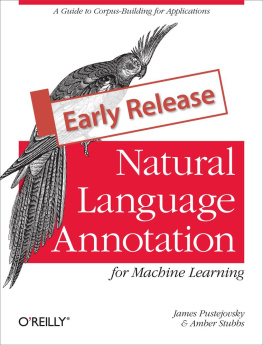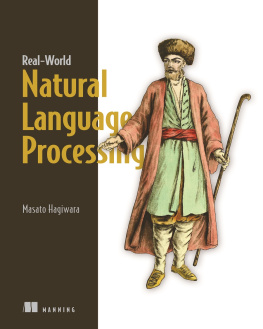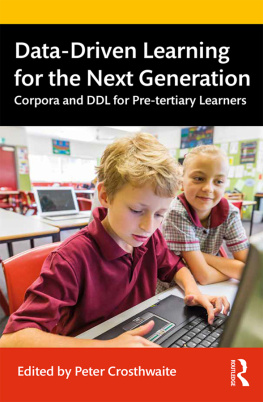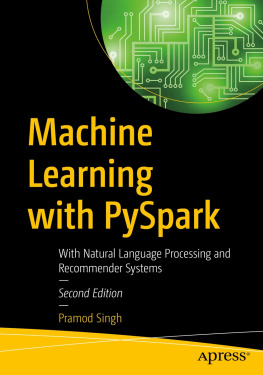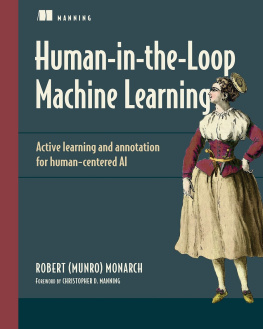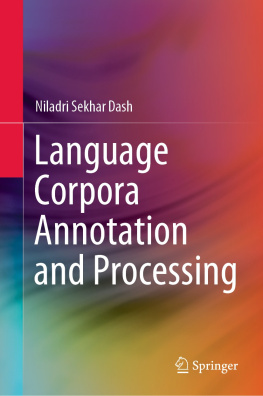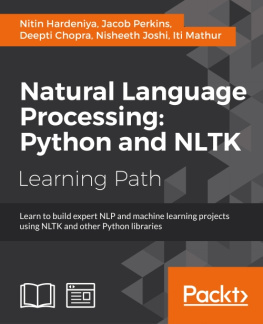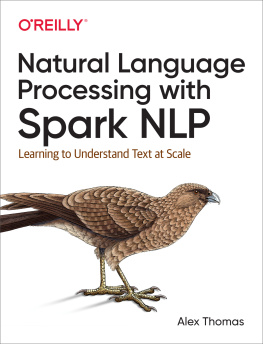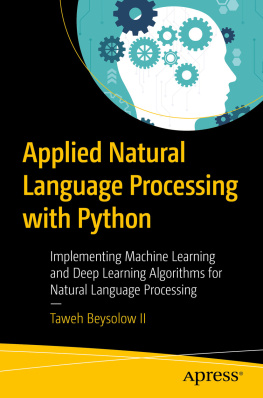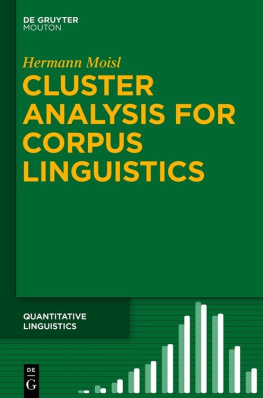This book is intended as a resource for people who are interested in using computers to help process natural language. A "natural language" refers to any language spoken by humans, either currently (e.g., English, Chinese, Spanish) or in the past (e.g., Latin, Greek, Sankrit). Annotation refers to the process of adding metadata information to the text in order to augment a computers abilities to perform Natural Language Processing (NLP). In particular, we examine how information can be added to natural language text through annotation in order to increase the performance of machine learning algorithmscomputer programs designed to extrapolate rules from the information provided over texts in order to apply those rules to unannotated texts later on.
Natural Language Annotation for Machine Learning
More specifically, this book details the multi-stage process for building your own annotated natural language dataset (known as a corpus) in order to train machine learning (ML) algorithms for language-based data and knowledge discovery. The overall goal of this book is to show readers how to create their own corpus, starting with selecting an annotation task, creating the annotation specification, designing the guidelines, creating a "gold standard" corpus, and then beginning the actual data creation with the annotation process.
Because the annotation process is not linear, multiple iterations can be required for defining the tasks, annotations, and evaluations, in order to achieve the best results for a particular goal. The process can be summed up in terms of the MATTER Annotation Development Process cycle: Model, Annotate Train, Test, Evaluate, Revise. This books guides the reader through the cycle, and provides case studies for four different annotation tasks. These tasks are examined in detail to provide context for the reader and help provide a foundation for their own machine learning goals.
Additionally, this book provides lightweight, user-friendly software that can be used for annotating texts and adjudicating the annotations. While there are a variety of annotation tools available to the community, the Multi-purpose Annotation Environment (MAE), adopted in this book (and available to readers as a free download), was specifically designed to be easy to set up and get running, so readers will not be distracted from their goal with confusing documentation. MAE is paired with the Multi-document Adjudication Interface (MAI), a tool that allows for quick comparison of annotated documents.
Audience
This book is ideal for anyone interested in using computers to explore aspects of the information content conveyed by natural language. It is not necessary to have a programming or linguistics background to use this book, although a basic understanding of a scripting language like Python can make the MATTER cycle easier to follow. If you dont have any Python experience, we highly recommend the OReilly book Natural Language Processing with Python by Steven Bird, Ewan Klein, and Edward Loper, which provides an excellent introduction both to Python and to aspects of NLP that are not addressed in this book.
Organization of the Book
Chapter 1 of this book provides a brief overview of the history of annotation and machine learning, as well as short discussions of some of the different ways that annotation tasks have been used to investigate different layers of linguistic research. The rest of the book guides the reader through the MATTER cycle, from tips on creating a reasonable annotation goal in Chapter 2, all the way through evaluating the results of the annotation and machine learning stages and revising as needed. The last chapter gives a complete walkthrough of a single annotation project, and appendices at the back of the book provide lists of resources that readers will find useful for their own annotation tasks.
Software Requirements
While its possible to work through this book without running any of the code examples provided, we do recommend having at least the Natural Language Toolkit (NLTK) installed for easy reference to some of the ML techniques discussed. The NLTK currently runs on Python versions from 2.4 to 2.7 (Python 3.0 is not supported at the time of this writing). For more information, see http://www.nltk.org.
Conventions Used in This Book
The following typographical conventions are used in this book:
Italic
Indicates new terms, URLs, email addresses, filenames, and file extensions.
Constant widthUsed for program listings, as well as within paragraphs to refer to program elements such as variable or function names, databases, data types, environment variables, statements, and keywords.
Constant width boldShows commands or other text that should be typed literally by the user.
Constant width italicShows text that should be replaced with user-supplied values or by values determined by context.
Tip
This icon signifies a tip, suggestion, or general note.
Caution
This icon indicates a warning or caution.
Using Code Examples
This book is here to help you get your job done. In general, you may use the code in this book in your programs and documentation. You do not need to contact us for permission unless youre reproducing a significant portion of the code. For example, writing a program that uses several chunks of code from this book does not require permission. Selling or distributing a CD-ROM of examples from OReilly books does require permission. Answering a question by citing this book and quoting example code does not require permission. Incorporating a significant amount of example code from this book into your products documentation does require permission.
We appreciate, but do not require, attribution. An attribution usually includes the title, author, publisher, and ISBN. For example: Book Title by Some Author (OReilly). Copyright 2011 Some Copyright Holder, 978-0-596-xxxx-x.
If you feel your use of code examples falls outside fair use or the permission given above, feel free to contact us at .
Safari Books Online
Note
Safari Books Online is an on-demand digital library that lets you easily search over 7,500 technology and creative reference books and videos to find the answers you need quickly.
With a subscription, you can read any page and watch any video from our library online. Read books on your cell phone and mobile devices. Access new titles before they are available for print, and get exclusive access to manuscripts in development and post feedback for the authors. Copy and paste code samples, organize your favorites, download chapters, bookmark key sections, create notes, print out pages, and benefit from tons of other time-saving features.
OReilly Media has uploaded this book to the Safari Books Online service. To have full digital access to this book and others on similar topics from OReilly and other publishers, sign up for free at http://my.safaribooksonline.com.
How to Contact Us
Please address comments and questions concerning this book to the publisher:

